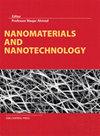沸石混合催化剂从棕榈油中转化喷气生物燃料系列碳氢化合物
IF 3.3
3区 材料科学
Q2 MATERIALS SCIENCE, MULTIDISCIPLINARY
引用次数: 13
摘要
采用Y、ZSM-5、Y-ZSM-5杂化和Y/ZSM-5复合四种沸石催化剂对棕榈油进行催化转化,制备了高烷烃、低芳烃的喷气生物燃料。以Y型沸石为种子,生长ZSM-5分子筛,合成Y-ZSM-5杂化催化剂。采用x射线衍射、傅里叶变换红外光谱、场发射扫描电镜和程序升温解吸氨对合成的沸石催化剂进行了表征,并用气相色谱-质谱(GC-MS)对喷气生物燃料的化学成分进行了分析。棕榈油在Y沸石上的转化产生了最高的喷气生物燃料收率(42 wt%):高选择性的喷气范围烷烃(51%)和低选择性的喷气范围芳烃(25%)。沸石Y-ZSM-5杂化催化剂产生的喷射范围烷烃百分比降低(30%),芳香烃选择性显著提高(57%)。以Y-ZSM-5分子筛为催化剂,棕榈油制烃转化率最高(99%),其次为Y/ZSM-5复合分子筛(96%)、Y分子筛(91%)和ZSM-5分子筛(74%)。棕榈油转化为喷气生物燃料的反应路线包括脂肪酸通过脱羧和脱羰脱氧成C15-C18烷烃、催化裂化成C8-C14烷烃、环烷烃以及芳构化成芳烃。本文章由计算机程序翻译,如有差异,请以英文原文为准。
Conversion of jet biofuel range hydrocarbons from palm oil over zeolite hybrid catalyst
The catalytic conversion of palm oil was carried out over four zeolite catalysts—Y, ZSM-5, Y-ZSM-5 hybrid, and Y/ZSM-5 composite—to produce jet biofuel with high amount of alkanes and low amount of aromatic hydrocarbons. The zeolite Y-ZSM-5 hybrid catalyst was synthesized using crystalline zeolite Y as the seed for the growth of zeolite ZSM-5. Synthesized zeolite catalysts were characterized by X-ray diffraction, Fourier transform infrared spectroscopy, field-emission scanning electron microscopy, and temperature programmed desorption of ammonia, while the chemical compositions of the jet biofuel were analyzed by gas chromatography-mass spectrometry (GC-MS). The conversion of palm oil over zeolite Y resulted in the highest yield (42 wt%) of jet biofuel: a high selectivity of jet range alkanes (51%) and a low selectivity of jet range aromatic hydrocarbons (25%). Zeolite Y-ZSM-5 hybrid catalyst produced a decreased percentage of jet range alkane (30%) and a significant increase in the selectivity of aromatic hydrocarbons (57%). The highest conversion of palm oil to hydrocarbon compounds was achieved by zeolite Y-ZSM-5 hybrid catalyst (99%), followed by zeolite Y/ZSM-5 composite (96%), zeolite Y (91%), and zeolite ZSM-5 (74%). The reaction routes for converting palm oil to jet biofuel involve deoxygenation of fatty acids into C15–C18 alkanes via decarboxylation and decarbonylation, catalytic cracking into C8–C14 alkanes, and cycloalkanes as well as aromatization into aromatic hydrocarbon.
求助全文
通过发布文献求助,成功后即可免费获取论文全文。
去求助
来源期刊

Nanomaterials and Nanotechnology
NANOSCIENCE & NANOTECHNOLOGY-MATERIALS SCIENCE, MULTIDISCIPLINARY
CiteScore
7.20
自引率
21.60%
发文量
13
审稿时长
15 weeks
期刊介绍:
Nanomaterials and Nanotechnology is a JCR ranked, peer-reviewed open access journal addressed to a cross-disciplinary readership including scientists, researchers and professionals in both academia and industry with an interest in nanoscience and nanotechnology. The scope comprises (but is not limited to) the fundamental aspects and applications of nanoscience and nanotechnology
 求助内容:
求助内容: 应助结果提醒方式:
应助结果提醒方式:


